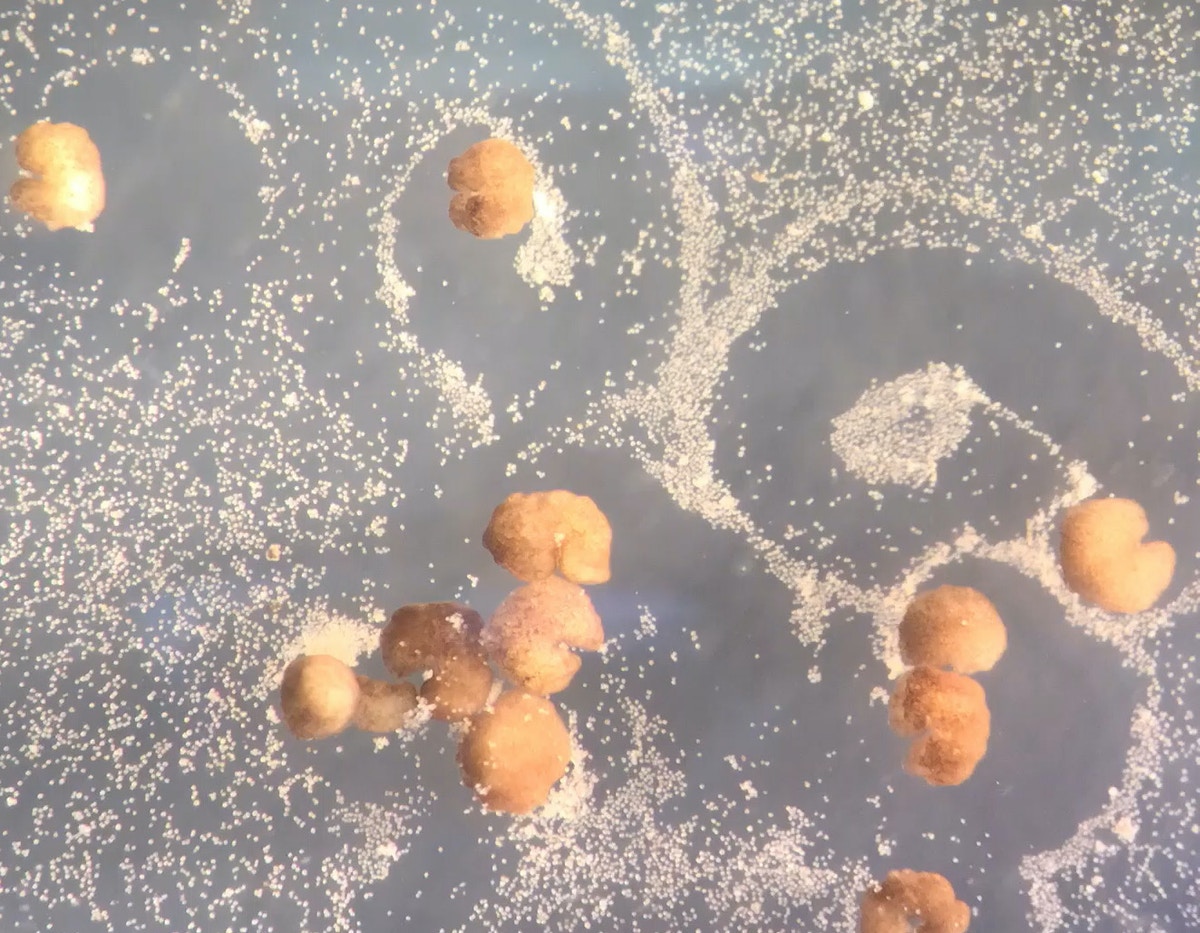

In nature most organisms reproduce by either mating and producing offspring, or creating clones of themselves. But a new mode of propagation is on the scene—new living robots can self-replicate by clustering cells and creating offshoots of themselves.
Let’s break down what that actually means. These robots are called xenobots—they’re synthetic lifeforms made from clusters of stem cells scraped from African clawed frog embryos. Using artificial intelligence, a team of engineers and computer scientists from the University of Vermont, Tufts University, and Harvard University tested out different body shapes for their living robots. They discovered that a Pac-Man-like C-shape made the little cell clumps the most efficient at self-replicating.
When the researchers say the bots can self-replicate, it doesn’t mean they actually reproduce. What they mean is, in that C-shape formation, the cluster can propel itself around a petri dish with the help of hair-like cilia, which sit on the outside of each cell. As it moves, the cluster gathers up other stray cells and bundles them until they form their own xenobot. But this process doesn’t go on forever. The cells were only able to do this for a few generations of xenobots.
“Most people think of robots as made of metals and ceramics, but it’s not so much what a robot is made from but what it does, which is act on its own on behalf of people,” Josh Bongard, a computer science professor and robotics expert at the University of Vermont and lead author of the study, told CNN. “In that way it’s a robot but it’s also clearly an organism made from genetically unmodified frog cell.”
[Related: LEO the robot can float like a butterfly and balance on a beam]
The team introduced the concept of their new robots early last year in a published paper in the Proceedings of the National Academy of Sciences (PNAS), and first created their xenobots earlier this year. This form of self-replication, however, is a new development, and isn’t done by any other living organism. The xenobots do, however, naturally fall apart after a couple weeks. The new findings were also published recently in PNAS.
“People have thought for quite a long time that we’ve worked out all the ways that life can reproduce or replicate. But this is something that’s never been observed before,” Douglas Blackiston, co-author from Tufts University who assembled the Xenobot “parents,” said in a statement issued by Harvard University’s Wyss Institute.
Having self-replicating machines could open up a slew of possibilities in both science and medicine, Bongard told The Guardian. “These are very small, biodegradable and biocompatible machines, and they’re perfectly happy in freshwater,” he said, adding that xenobots could collect microplastics from waterways or fix electrical circuits.
These self-assembling robots could also provide insight as to how some species, like frogs and salamanders, can regenerate body parts while humans are only able to regenerate skin, or bits of liver, co-author and Tufts University engineer Sam Kriegman told Insider. He added that they have plenty of future experiments lined up for their living robots, but right now, the xenobots are “just balls of motors.”